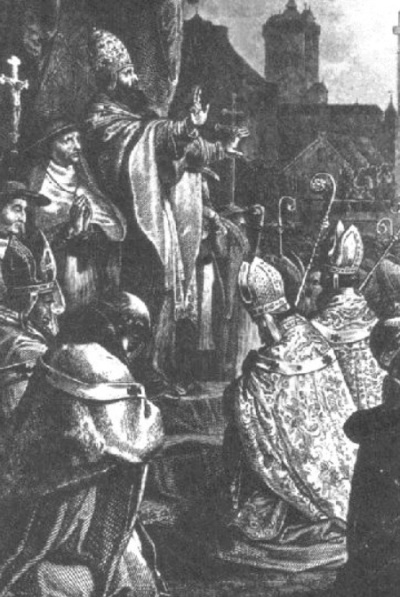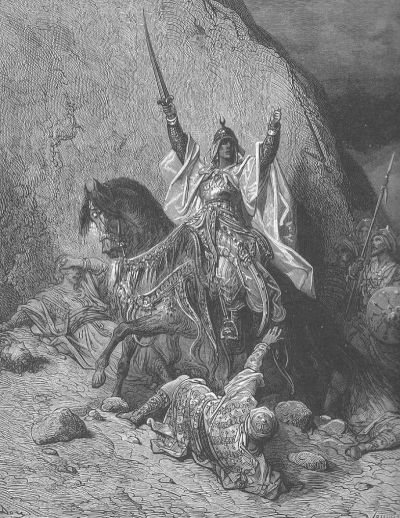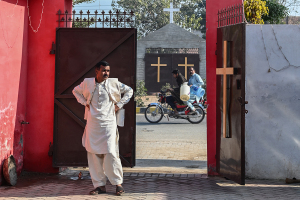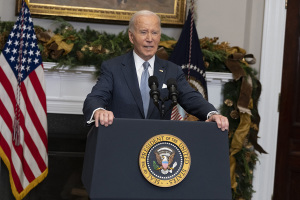New book on Crusades uses ‘diverse’ personal experiences to tell story of holy wars

A history book written for the general population seeks to tell the story of the Crusades from the personal experiences of a diverse group of people involved at various levels.
Best-selling author and historian Dan Jones released his latest book, Crusaders: The Epic History of the Wars for the Holy Lands, earlier this month.
In an interview with The Christian Post on Thursday, Jones said his book varies from the many histories written about the Crusades in that it's centered on the personal experiences and accounts of many of those involved.
“I call this book Crusaders, because it proceeds through viewpoint chapters of individuals involved on all sides of the Crusades,” explained Jones. “That means that each chapter is very personal to the individual involved. So it has a similar feeling, the technique is borrowed, in narrative terms, from historical fiction.”
Jones hopes readers will “get a new sense for the vast and almost dizzying plurality and scope and diversity of this story.”
“It’s not just Richard the Lionheart, Saladin, and the Kingdom of Jerusalem. This is a story that goes right across what was then the western world and indeed out to the eastern world,” he said.
A broad group of characters

Each chapter includes the experiences of an individual involved in some capacity with the Crusading period. These include figures such as Pope Urban II, who called for a crusade in 1095 to retake the Holy Land, and Saladin, the Muslim leader whose army conquered and took control of Jerusalem from the Christian forces in 1187.
Jones also includes lesser-known figures Margaret of Beverley, an English pilgrim in Jerusalem who found herself helping to defend the city against Saladin’s forces, and Hermann von Salza, a leader of the Teutonic Knights and diplomat.
He wanted “the casting of a very diverse group of characters ranging from Christians of the Latin West, but also Christians of the Greek Church, the Syrian Church, the Armenian Church,” the author added.
“Then we have Sunni and Shia Muslims, Jewish people, men, women, children and so on. It allows their experiences of crusading to speak to one another over the course of the book,” Jones said.
“It’s just an element of pragmatic storytelling. Which characters are going to take you through an important part of crusading history in a way that allows you to see as much of the world as possible?”
Jones compared it to “casting a movie” and wanting to have a “balance” between covering well-known characters and “more surprising characters.”
“I was always more drawn to the surprising characters,” he said. “I was looking for range and breadth and experience. I was also looking for characters who would take us into a familiar episode from an unfamiliar angle.”
A larger geographic scope

While the Crusades are generally thought of by modern society as a series of conflicts based in the Middle East, many Crusades were in fact launched elsewhere, including Spain and the Baltic region.
Jones explained to CP that he found it important to include these other Crusades that were happening during the Medieval time period to showcase “just how far this phenomenon spread once it had begun in the 1090s.”
“I felt it very important to try and knit together what was going on in the Kingdom of Jerusalem, the Holy Land as we tend to think of it, with Spain, the Baltic, Southern France, Sicily, Italy,” Jones added.
“Because the story of crusading really is the story of the uncontrollable growth of an idea until it is almost detached entirely from its moorings.”
Jones noted both in his book and to CP how the term changes to include conflicts like those within the Medieval Catholic Church, during 14th century when crusading became “a political weapon for popes and antipopes to wield at one another.”
“You have the most unlikely crusaders cropping up and the most unlikely crusades in which you have Christians fighting Christians all over the world, both sides sometimes claiming to be crusaders,” he said.
“I was fascinated by how the potency of that idea had allowed it to survive and change over centuries and by extension, why that idea is still current today.”
A rising modern trend

In the final part of the book, Jones notes that the crusader worldview continues to persist in the rhetoric of Europeans long after their Muslim enemies secured control of the Holy Land.
Jones details in Crusaders how Christopher Columbus, when asking Ferdinand and Isabella for support in his famed westward voyage, used a “godly rationale for his journey” that “chimed with all the patterns of thought that had been developed out of the crusading movement.”
“Even the flattery he piled upon his royal sponsors belied four centuries of crusader zealotry,” Jones writes in the book.
In his Epilogue, Jones shows the recurrent use of crusader imagery, rhetoric and ideas long after the Middle Ages. As an example, he cites a pro-American World War I film titled “Pershing’s Crusaders.”
Jones said over the past few decades there has been a rise in this rhetoric among both far-right groups in western countries, as well as radical Islamic terrorist groups, such as the Islamic State.
“I certainly feel that the name of crusading is uncommonly popular among extremist groups in the context of my lifetime,” Jones told CP. “This call from the First Crusade has become a call, sort of a rallying cry for white supremacists, both in the United States and in Europe.”
"By the same token, the adoption of the binary 'crusading worldview' by al Qaeda offshoots, most notably including ISIS, Islamic State, has been a remarkably popular, remarkably effective propaganda tool on that side. It certainly feels to me like it's on the rise."
One of the goals Jones had in mind for the book was to help people understand “what great misery crusading caused to a lot of people over four centuries,” so that they “think twice about loosely banding around this word, let alone hoping that we can revive a pretty violent era."





























